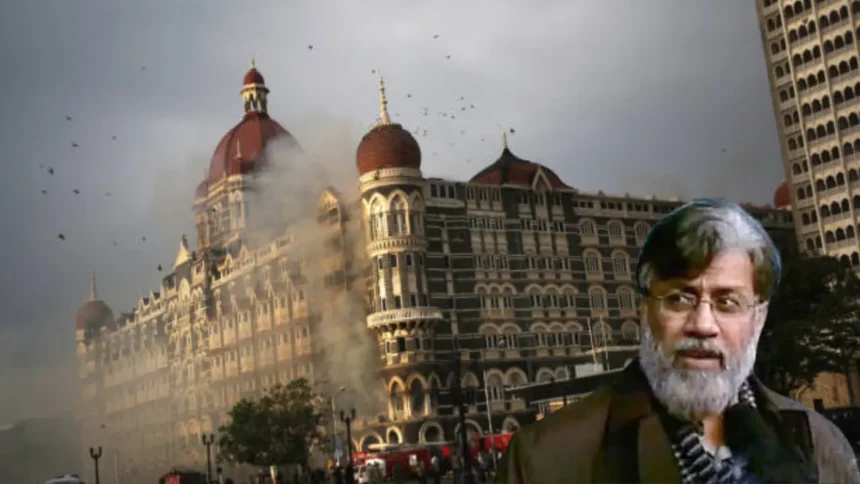Why Tahawwur Rana’s Extradition Matters for India
A Major Breakthrough in the 26/11 Mumbai Terror Case
After nearly 16 years, a long-awaited chapter in India’s fight against terrorism is finally unfolding. Tahawwur Rana, one of the key accused in the 2008 Mumbai terror attacks, is back on Indian soil. His extradition from the United States marks a critical milestone in the pursuit of justice for the victims of the 26/11 attacks.
The news of Rana’s arrival in India has stirred emotions across the nation — anger, hope, and a renewed demand for accountability. But who is Tahawwur Rana, why is his return significant, and what happens next? Let’s break it all down.
Who is Tahawwur Rana?
Tahawwur Hussain Rana was born in Pakistan and served as a doctor in the Pakistan Army. However, he eventually left the military, moved abroad, and became a Canadian citizen. For years, he lived in Chicago, USA, where he ran an immigration services business.
But behind his legitimate business front, investigators say Rana was deeply involved in terror networks. According to court documents, between 2006 and 2008, he collaborated with David Coleman Headley—another key player in the 26/11 attacks—to plan and support operations for terrorist outfits like Lashkar-e-Taiba (LeT) and Harkat-ul-Jihad-al-Islami.
Rana was not just a passive supporter. He allegedly helped Headley scout locations, provided cover for his travel, and played a crucial logistical role in making the Mumbai attacks possible.
A Look Back at 26/11: The Day India Froze in Terror
On 26th November 2008, ten heavily armed terrorists from Pakistan entered Mumbai by sea and launched a series of coordinated attacks across the city. Over 170 innocent people lost their lives, including foreigners, police officers, and hotel staff.
Key locations like the Taj Mahal Palace Hotel, Oberoi Trident, Chhatrapati Shivaji Terminus, and Nariman House were targeted in this horrifying siege that lasted four days. The attackers indiscriminately fired at civilians, planted explosives, and held hostages while the nation watched in horror.
One of the terrorists, Ajmal Kasab, was captured alive and later executed. But the conspirators and planners—like Rana—remained out of reach. Until now.
Why is Rana Being Extradited Now?
Rana’s extradition has been years in the making. Though he was arrested in the U.S. for his involvement in terror-related activities, legal hurdles and appeals delayed his return to India.
In 2023, a U.S. court finally approved his extradition. Now, in 2024, after completing all necessary diplomatic and legal formalities, Indian authorities have brought him back on a special aircraft.
This isn’t just a legal move — it’s a symbolic victory for India’s security forces, survivors, and families who have waited over a decade for justice.
High Security in Delhi as Rana Lands
As Tahawwur Rana arrives in India, Delhi is on high alert. The National Investigation Agency (NIA) has significantly ramped up security at its headquarters. Additional CISF barricading has been deployed, and a multi-layer security cordon is in place.
Rana will be produced before an NIA special court in Delhi, where authorities will request his custodial interrogation. After the NIA’s initial investigation, the case may be transferred to the Mumbai Crime Branch, since the core charges relate to the 26/11 attack in Mumbai.
Given the sensitivity of the case, Rana will be held in a secure, undisclosed location, either in Delhi or Mumbai, as per U.S. court guidelines. His safety is paramount—not just for legal proceedings, but also due to potential threats from terror groups or individuals seeking revenge.
Why This Matters: National and Global Impact
Tahawwur Rana’s extradition is more than a procedural event — it’s a message to the world. It shows that India’s fight against terror is relentless, and even if justice takes time, it will be served.
This move also demonstrates the strength of Indo-U.S. cooperation on national security issues. The extradition sets a precedent that no matter where a terrorist hides, international laws will catch up with them.
It’s also a strong warning to terror outfits and sleeper cells: their past actions will not be forgotten.
What Happens Next?
Now that Rana is in India, the legal and investigative process will move forward swiftly. Authorities will focus on:
- Uncovering the extent of his involvement in 26/11
- Investigating his ties with other terror groups
- Tracing his financial and communication networks
- Identifying any active collaborators still at large
David Headley, who turned approver in the U.S., has already confirmed Rana’s role in the attacks. But Rana’s testimony may reveal new names, locations, and plans.
The results of this investigation could not only solidify the 26/11 case but also help prevent future terror threats.
Final Thoughts: Justice Delayed, But Not Denied
For the families of 26/11 victims, Tahawwur Rana’s return to India brings a glimmer of justice. It reignites painful memories, but also delivers hope — that the system is finally catching up with those who thought they could escape accountability.
As investigations continue, the nation watches closely. This time, India is determined to make sure that every hand involved in 26/11 pays the price.
Most read: https://tnheadlines24.com/tahawwur-rana-extradition/
Stay Updated on Justice in Action
This story is far from over. Over the coming weeks, we can expect more revelations, court updates, and possible charges against other individuals connected to Rana.
To stay informed on this high-profile case, follow our updates as we track Rana’s legal journey and India’s ongoing efforts to hold terrorists accountable.
Disclaimer: TN HEADLINES24 is not responsible for the accuracy of the claims or allegations made in this article. The content is based on publicly available reports and official statements. Readers are advised to verify facts independently and interpret the information responsibly.








